Eurozone money trends consistent with slow growth but French weakness intensifying
Eurozone monetary trends remain consistent with economic improvement but real M1 expansion has fallen back, suggesting that growth will be insufficient to prevent a further rise in unemployment. French M1 contraction, moreover, has accelerated – a deepening recession in that country could be the next focus of regional strains.
Six-month growth in eurozone real M1 was 2.3% (not annualised) in January, down from an October peak of 4.7% but still consistent with moderate economic expansion – see first chart. Real M3 growth was weaker at 0.2% but is less useful for forecasting the economy. Both measures were contracting a year ago, correctly signalling a recession.
Encouragingly, M1 divergence between the core and periphery continues to narrow. The six-month fall in combined real M1 deposits in Greece, Ireland, Italy, Portugal and Spain slowed to 0.1% in January, the smallest since April 2010 – second chart. In the last three months, peripheral real deposits rose by 0.8% versus a 1.5% increase in the core – third chart.
In the big four economies, real M1 deposits grew strongly in Germany and modestly in Italy in the six months to January – fourth chart. Spanish contraction slowed last month and the main focus of concern is now France – the six-month fall accelerated to 3.3% versus a maximum decline of 3.4% before the 2008-09 slump. Other notable recent developments include a sharp slowdown in Belgium and the Netherlands and renewed Irish weakness.
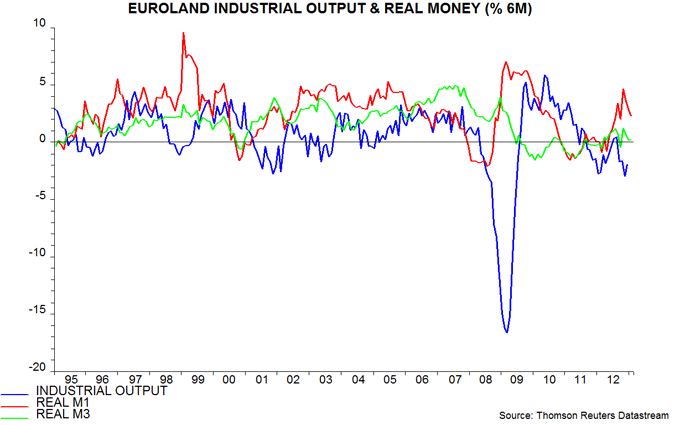
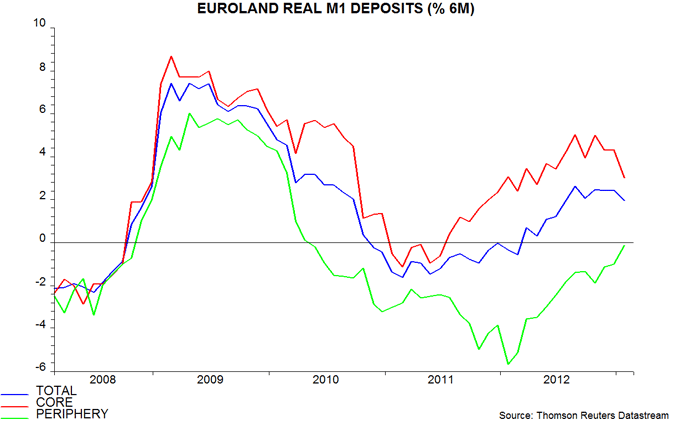
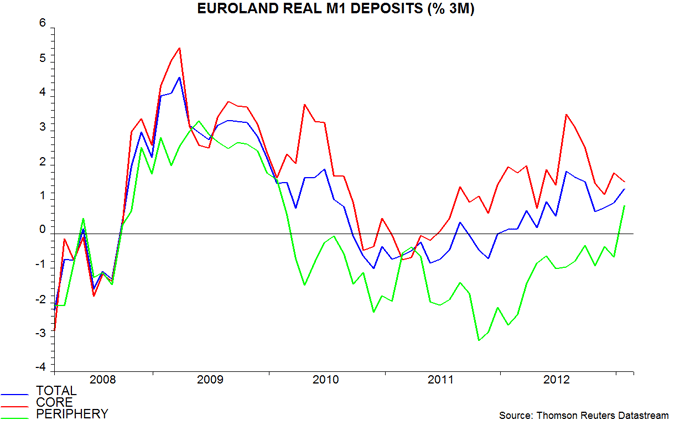
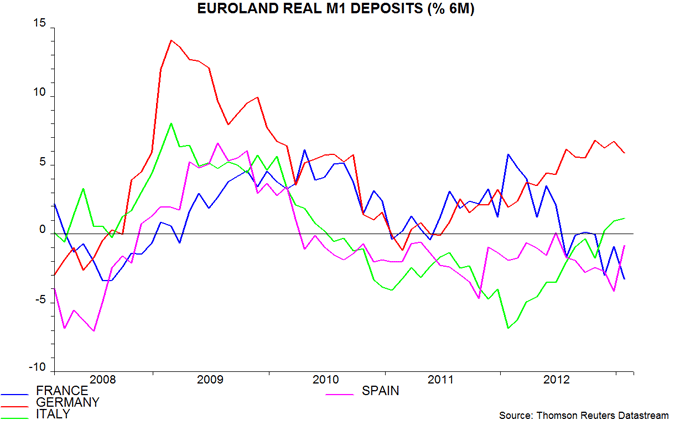
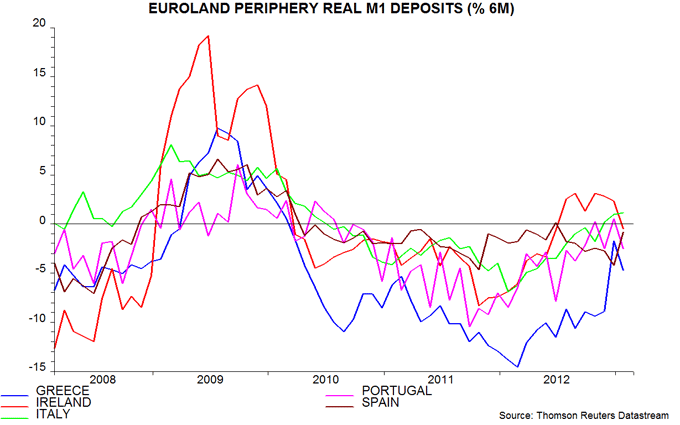

Reader Comments (1)
Dear Simon
Concerning your last post titled "Eurozone money trends consistent with slow growth but French weakness intensifying", would it be possible to post the results of the peripherals on a country by country basis (e.g. Portugal, Ireland, Spain and Italy) ???
Many thanks in advance,
Vasco Rosa